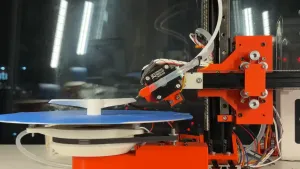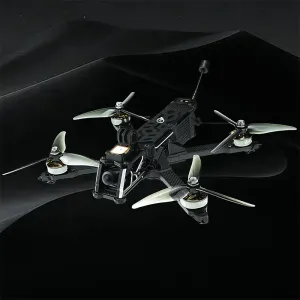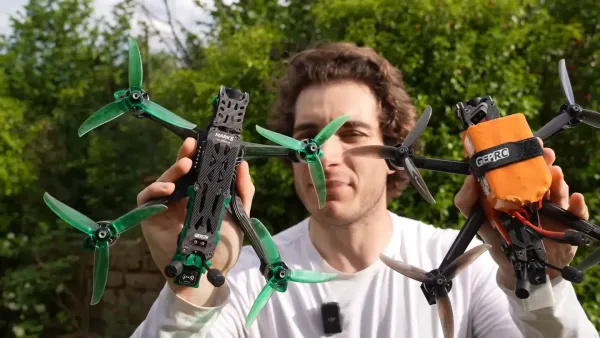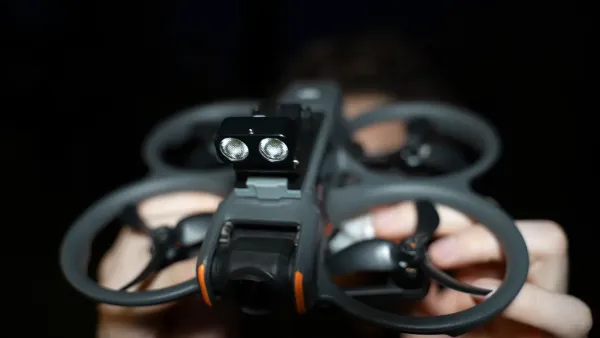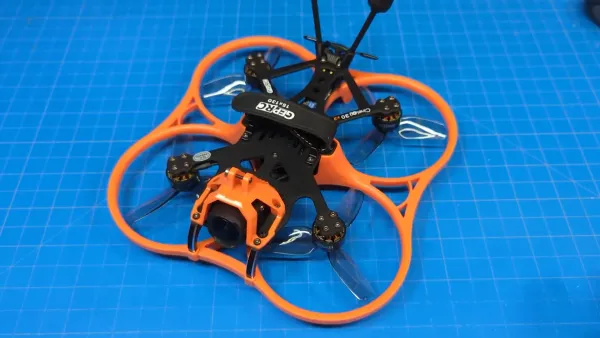In a recent exploration of drone capabilities, Rimzler revisits the Flywoo FlyTimes 85, a drone that has captured the hearts of many for its impressive performance, especially given its ultra-lightweight design. Weighing in at under 100 grams with the right battery, this drone is marketed as a hybrid between a Cinewhoop and a Toothpick, making it a versatile choice for both indoor and outdoor flying. In this video, Rimzler sets out to investigate the impact of removing the propeller guards on flight performance and durability.
Benchmark Flight Stock 720 2S HV
To establish a baseline, Rimzler conducts a benchmark flight with the propeller guards intact. Using 720mAh 2S HV batteries, he navigates through windy conditions that provide a rigorous test for the tiny drone. The performance is nothing short of remarkable; even in challenging winds, the FlyTimes 85 displays an impressive level of stability and control.

Rimzler notes that the drone’s flight characteristics are enhanced by its lightweight design and effective stabilization features, which keep footage smooth and free from jello. He highlights its suitability for both cinematic shots and freestyle flying, making it a well-rounded option for drone enthusiasts.
Removing The Prop Guards
After establishing the drone's performance with the guards, Rimzler proceeds to remove them. The process is straightforward; it involves unscrewing three screws per motor, making it an easy modification for users looking to shed some weight. Removing the guards reduces the weight from 71 grams to 63 grams, a change that Rimzler anticipates will impact the drone's flight dynamics.

However, he also notes the importance of using shorter screws after the removal, as the original screws are too long and could damage the motors. Rimzler suggests that screws typically used for Tiny Whoop drones are suitable for this purpose.
Test Without Prop Guards 720 2S HV
With the prop guards removed, Rimzler takes the drone for another flight. He quickly identifies that the drone feels different, primarily due to the weight reduction. While the drone flies smoothly, he mentions that it might require retuning to optimize performance after the weight change.

Despite some minor fluttering, the drone retains much of its stability and speed. Rimzler notes that the absence of prop guards allows for better wind handling due to decreased surface area, making it a viable choice for outdoor flying. He also discusses the possibility of achieving longer flight times with a larger battery while remaining under the sub-100 gram limit, which is particularly beneficial for users in regions with strict weight regulations.
Final Opinion
Rimzler concludes his testing with a mixed sentiment about the modifications. While he acknowledges the potential benefits of removing the prop guards—such as improved flight time and better handling in wind—he also warns of the risks. The exposed components increase the likelihood of damage in case of crashes, particularly for those new to drone flying.

He ultimately recommends that most users keep the drone as it comes out of the box, as it is already well-tuned for flight with the prop guards. The extra protection they provide is invaluable, especially for beginners. For those willing to modify, he emphasizes the importance of understanding the necessary adjustments to maintain optimal performance.
FAQ
- What is the weight of the Flywoo FlyTimes 85 without prop guards? The weight is reduced to 63 grams after removing the prop guards.
- Do I need to retune the drone after removing the prop guards? Yes, it is advisable to retune the drone to account for the weight loss and maintain stability.
- Is it safe to fly without prop guards? While it is possible, flying without guards increases the risk of damage to the drone's components.
- Can I achieve longer flight times by removing prop guards? Yes, removing the guards can help you stay under the sub-100 gram limit, allowing for the use of larger batteries without exceeding weight regulations.
For more insights and detailed reviews, check out Rimzler's channel for the full video and other exciting drone content: Rimzler on YouTube.



